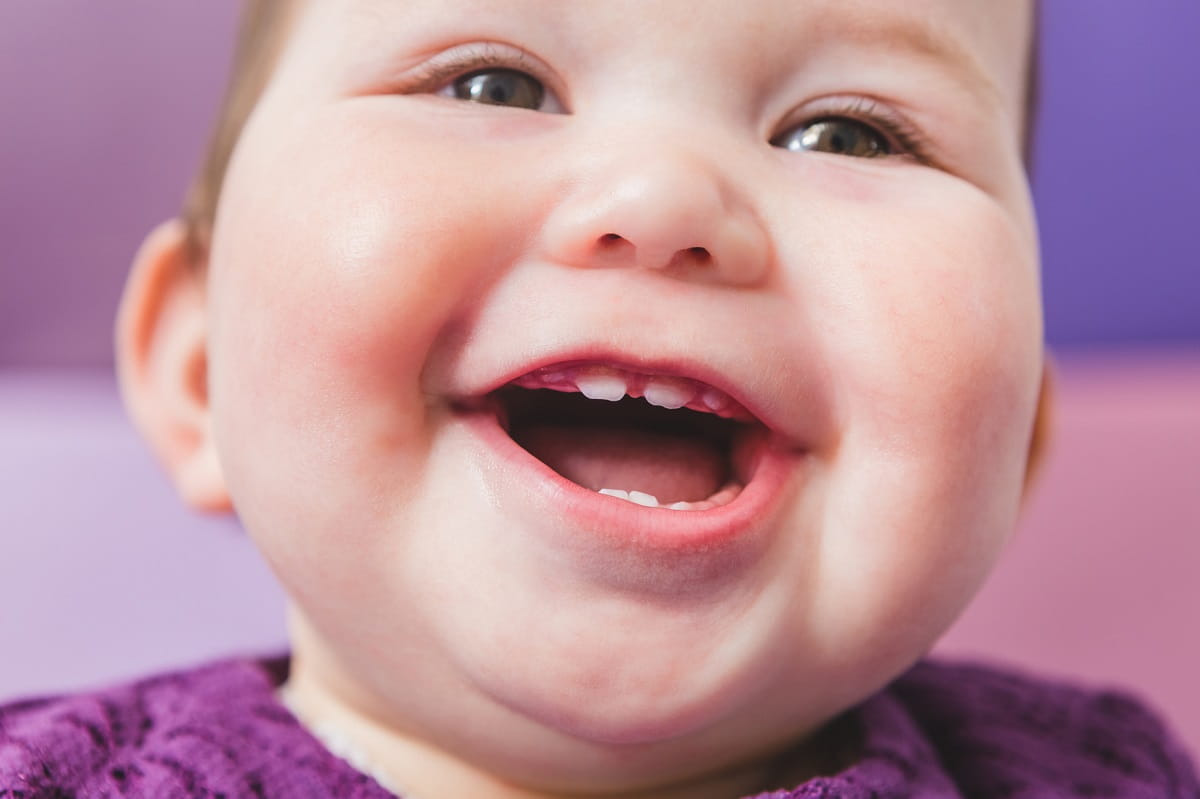Smile Bright! How to Make the First Dentist Visit a Happy One For Every Child

On two half-days each week, Dr. Travis Nelson, clinical assistant professor at the University of Washington’s Center for Pediatric Dentistry, provides dental care to children with autism. Children who are not neuro-typical—like those with autism—can have trouble following rules and controlling behavior: Just getting them to stay still for a cleaning can be a major challenge.
“The moving chairs can be really overwhelming and scary,” explains Dr. Nelson. “What feels like a little ride up and down to us, can feel like a frightening free fall to them.” For many of these children, a trip to the dentist can be downright traumatic.
His patients aren’t the only ones who have a hard time going to the dentist. Unfamiliar instruments and unusual sounds, smells, and tastes can make any child—and plenty of adults—nervous and resistant.
Dr. Nelson and the clinic staff have developed a range of supportive accommodations to help their young patients be more confident and comfortable with the dentist’s office. Their compassionate and practical approach can help any young child get used to the idea of trip to the dentist.
1. Practice visiting the dentist.
The Center for Pediatric Dentistry invites all new patients to visit prior to their first appointment. During this first visit, children can explore the environment at their own pace and familiarize themselves with the people and place.
Some dentist offices host field trips, so that a school group can learn about the dentist and practice riding in the chair. If your child’s dentist doesn’t offer practice visits, Dr. Nelson suggests checking with a local children’s museum. They may have a dentist chair where children can practice by playing pretend.
2. Practice at home.
Getting children used to opening wide can help checkups go smoothly. You can also get them used to dental mirrors and the like by counting their teeth one-by-one with your fingers.
3. Use a story.
The clinic provides a story in pictures, or a short video, to help children prepare for a trip to the dentist. Simple photos and captions explain each step of a visit: Today I am going to the dentist. My family and I will walk into a large brick building… I will check in at the front desk. These types of social stories are great tools for children who may struggle in new social settings. They explain an unfamiliar situation and help the child learn to expect and recognize new social interactions, situations, cues, and rules.
Books and stories can help preschool-aged children understand the process and feel more confident during their early visits. You can build your own, with pictures from your dentist’s office, or check out the clinics’ story here.
4. Celebrate success in pictures.
Your smartphone is a great tool to use during a first introduction to the dentist’s office. Take a photo of your child opening his mouth wide, or video of her riding up and down in the chair. Save the images for your next checkup. Children love to look at themselves and the pictures help children to remember what they’ve already accomplished.
5. Meet (and greet) the dentist behind the mask.
Protective equipment like masks, gloves, and gowns, can trigger real fear in children. The Autism Clinic provides pictures of the dentistry staff with and without masks. While your child may not require that level of preparation, be sure to give him time to meet the dentist. A warm introduction might help him be more comfortable when the mask comes on.
6. Give a specific reward after a visit.
No generic bowl of smiley-faced stickers here! Dr. Nelson works with families to pick a reward that is meaningful to each individual child. One child gets to go throw rocks in the lake (his very favorite activity) after seeing the dentist. Another is really into plumbing and is building a toilet at home. After a successful visit, he gets a new plumbing part for his project.
7. Establish a dental home
Help your child to understand her dentist and the staff as a friendly part of her life. Dr. Nelson encourages his patients and their families to think of the dentist’s office as a place filled with people available to answer your questions and keep your teeth and mouth healthy.
“Dentistry is a life skill,” says Dr. Nelson, “like getting a haircut or using the bathroom. Kids who are able to receive dental care will be adults who receive dental care.”





